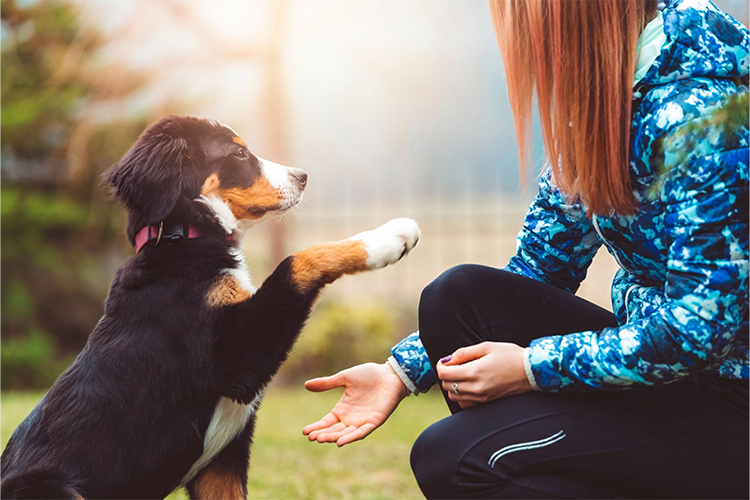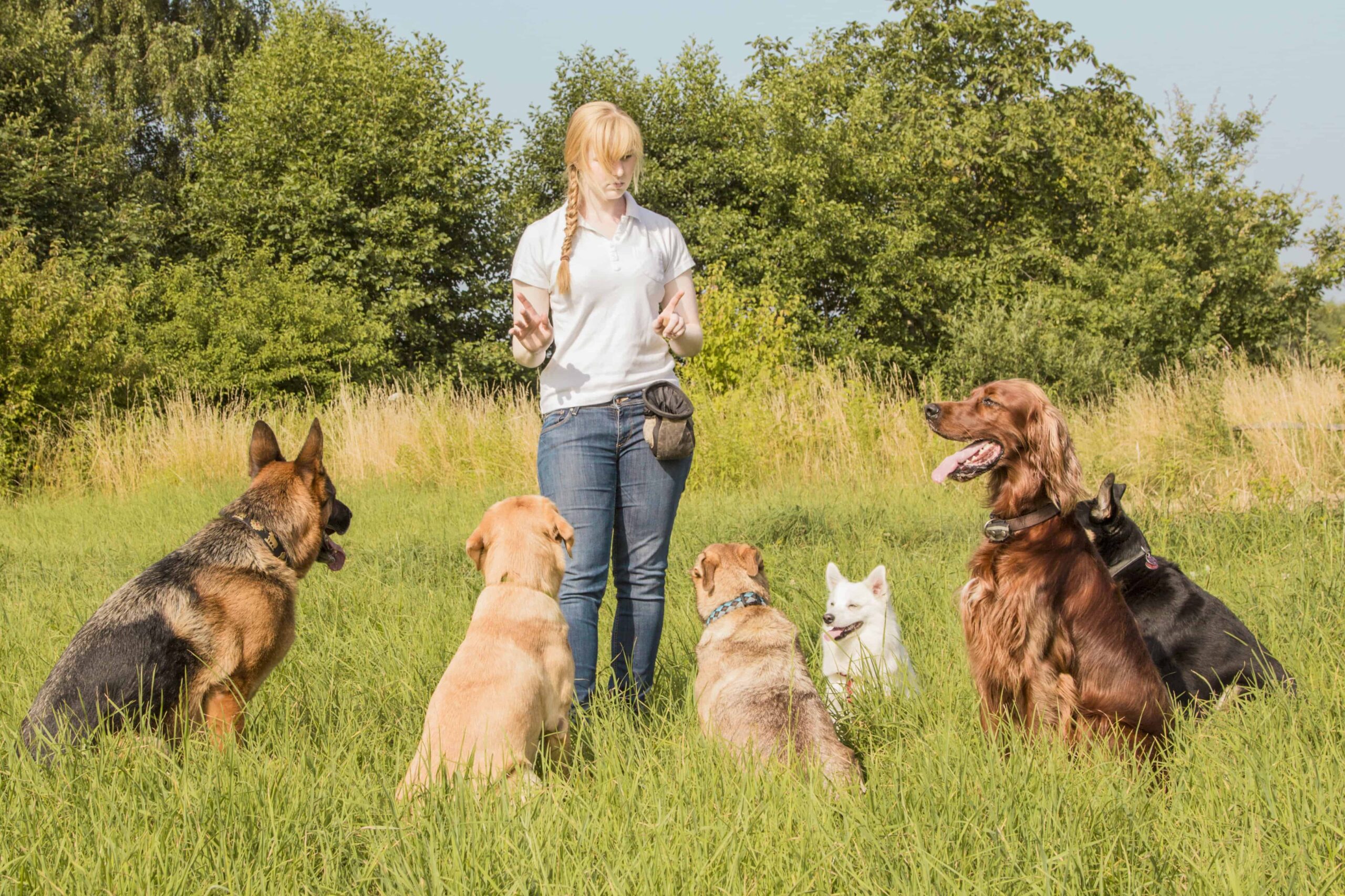Understanding Canine Body Movement Throughout Dog Training
Understanding Canine Body Movement Throughout Dog Training
Blog Article
Necessary Tips for Successful Dog Training: A Guide for Family Pet Owners
Effective pet training is a diverse process that calls for a calculated method tailored to both the pet dog's character and the owner's goals. Understanding just how to browse these challenges can considerably enhance the training experience, eventually transforming the partnership between proprietor and canine.
Recognizing Dog Behavior
Recognizing dog behavior is vital for effective training and fostering a harmonious partnership between dogs and their proprietors. dog training. Pets communicate mainly with body language, articulations, and activities, making it important for proprietors to analyze these signals properly.

Socialization plays a significant role in canine behavior; exposure to various environments, individuals, and various other pets can substantially affect a pet dog's character. Moreover, elements such as breed characteristics and individual personality need to assist training techniques, as some breeds might have details behavior characteristics that necessitate customized strategies. By recognizing these aspects, proprietors can produce a supportive setting that motivates positive habits, resulting in successful training outcomes and a much deeper bond with their pets.
Developing Constant Commands
Reliable communication with your dog begins with developing constant commands. This fundamental aspect of training is crucial for cultivating understanding between you and your family pet. Consistency in the commands you utilize ensures that your pet dog can reliably connect specific words or phrases with the wanted behaviors.
When choosing commands, pick clear, unique words that are very easy to say and distinguish from each other. Prevent making use of similar-sounding commands that may puzzle your pet. For example, utilizing "rest" and "stay" is suitable, yet "rest" and "hit" might bring about misunderstandings.
Furthermore, keep the very same tone and volume for every command. Pet dogs are delicate to singing cues, so varying your tone can develop complication.
It is just as essential to make certain that all relative are on the very same web page relating to the commands utilized. A united front in command usage will certainly protect against combined signals and strengthen the knowing process.
Favorable Reinforcement Techniques
The power of favorable support in canine training lies in its capacity to motivate desired actions with rewards and appreciation. This method is grounded in the concept that habits followed by desirable results are much more most likely to be repeated. By incorporating favorable reinforcement right into your training program, you can effectively form your dog's actions in a useful manner.
To implement favorable reinforcement, it's vital to determine what encourages your pet, whether it be treats, playthings, or verbal appreciation. When your canine executes a desired activity, such as resting on command, promptly reward them with a reward or love. This association in between the command and the positive result reinforces their understanding.
It's important to timing the incentives properly; supplying the reinforcement within seconds of the wanted behavior assists your pet dog make the connection (dog training). Furthermore, uniformity is vital-- guarantee that all member of the family use the exact same commands and incentive systems to prevent confusion

Progressively, you can decrease the regularity of deals with as your canine discovers the actions, transitioning to praise or periodic incentives. This method not just cultivates my explanation a solid bond between you and your canine however additionally advertises a favorable knowing atmosphere, making educating a delightful experience for both.
Socialization and Interaction
Regularly subjecting your pet dog to a selection of settings, individuals, and various other pets is essential for their social advancement. Socialization must start early, preferably throughout the important home window of 3 to 14 weeks, when pups are most responsive to brand-new experiences. Nonetheless, older pets can additionally profit from recurring socializing initiatives.
Introduce your canine to different settings, such as parks, pet-friendly shops, and city try this site locations. This direct exposure assists them adapt to different stimuli, decreasing anxiety and fear responses. Urge favorable communications with other canines and people, ensuring that these experiences are controlled and safe to cultivate self-confidence.
Use structured playdates with genteel pet dogs, as this can enhance your pet's social abilities and instruct them ideal habits. Obedience classes and training sessions likewise provide superb opportunities for socialization, enabling your canine to connect with others in a supervised environment.
Screen your dog's body movement during interactions, as this will certainly assist you gauge their comfort degree. Gradually raise exposure to even more challenging circumstances while ensuring that each experience is favorable. A well-socialized pet is more probable to exhibit well balanced actions, making them a delight to have in any kind of setting.
Attending To Usual Training Difficulties
Every pet dog proprietor will encounter training obstacles at some time, regardless of their pet dog's age or socializing level. Determining usual concerns such as stubbornness, interruptions, and terror can aid in developing efficient methods for improvement.

Distractions during training sessions can derail focus. To combat this, start training in a quiet environment with minimal stimuli. Gradually introduce distractions as the canine becomes much more skilled in commands. Short, regular training sessions are also reliable in keeping attention.
Terror can prevent a dog's understanding process. Steady desensitization to the resource of anxiety, coupled with favorable reinforcement, can assist minimize anxiousness. Patience is essential; never force a pet dog into a circumstance that triggers distress, as this might intensify the problem.
Eventually, understanding and attending to these typical obstacles with an organized strategy will cultivate a more efficient training experience, strengthening the bond between dog and proprietor while advertising effective discovering.
Verdict
In recap, successful pet training depends on an extensive understanding of canine actions, the establishment of constant commands, and the application of positive support methods. Socialization plays an essential role in developing well-adjusted pets, while resolving usual training obstacles calls for perseverance and adaptability. By executing these important methods, pet proprietors can promote a solid bond with their pets and promote desirable habits, eventually leading to an unified connection in between people and their canine friends.
Understanding dog habits is necessary for effective training and promoting an unified connection in between canines and their owners.Socialization plays a significant role in canine actions; exposure to numerous view publisher site settings, individuals, and other animals can substantially affect a dog's character.The power of favorable support in canine training lies in its capacity to urge wanted habits with incentives and praise. By incorporating favorable reinforcement into your training program, you can effectively form your canine's habits in a positive fashion.
In summary, successful pet training counts on a comprehensive understanding of canine behavior, the facility of constant commands, and the application of favorable support methods.
Report this page